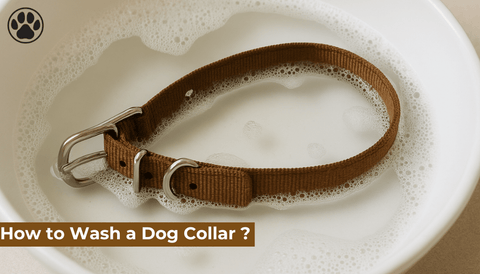
Can Dogs Eat Jello?
of reading - words
Jello is a popular dessert enjoyed by many households, thanks to its bright colors, sweet taste, and fun texture. But as a dog owner, you may wonder: can dogs eat Jello? While the answer is not a simple yes or no, this article will delve into the safety of feeding Jello to dogs, the potential risks, and what alternatives you can consider.
What Is Jello Made Of?
Jello is a gelatin-based dessert that typically contains:
-
Gelatin: A protein derived from animal collagen, generally safe for dogs.
-
Sugar: Commonly used to sweeten Jello, which is not healthy for dogs in large amounts.
-
Artificial Sweeteners: Some Jello products contain xylitol, a sweetener that is highly toxic to dogs.
-
Artificial Colors and Flavors: These may cause allergic reactions or digestive upset in some dogs.
Understanding these ingredients is key to determining whether Jello is safe for your furry friend.
Is Jello Safe for Dogs?
The safety of Jello for dogs depends largely on its ingredients:
1. Regular Jello with Sugar While small amounts of regular Jello may not be toxic to dogs, the high sugar content can lead to obesity, diabetes, and dental issues over time. It’s best to avoid giving your dog sugary Jello.
2. Sugar-Free Jello Sugar-free Jello often contains artificial sweeteners like xylitol, which is extremely toxic to dogs. Even a small amount of xylitol can cause severe health issues, including hypoglycemia (low blood sugar), liver failure, and even death.
3. Homemade Jello If you’re determined to share Jello with your dog, homemade versions made with unflavored gelatin and dog-safe ingredients like fruit or broth can be a safer option.
Potential Risks of Feeding Jello to Dogs
Feeding Jello to dogs can pose several risks, including:
1. Toxicity from Xylitol As mentioned, xylitol is a common ingredient in sugar-free Jello and is highly toxic to dogs. Symptoms of xylitol poisoning include vomiting, lethargy, loss of coordination, and seizures. If you suspect your dog has ingested xylitol, contact your veterinarian immediately.
2. Digestive Issues The artificial colors, flavors, and high sugar content in Jello can upset your dog’s stomach, leading to diarrhea, vomiting, or bloating.
3. Weight Gain The excessive sugar in Jello can contribute to weight gain, increasing the risk of obesity-related health problems.
4. Allergic Reactions Some dogs may be allergic to certain ingredients in Jello, such as artificial dyes or flavorings. Symptoms of an allergic reaction include itching, swelling, and skin irritation.
Can Dogs Benefit from Gelatin?
While commercial Jello is not a healthy option for dogs, unflavored gelatin can provide some benefits:
-
Improved Joint Health: Gelatin is a source of collagen, which supports joint health and may benefit dogs with arthritis or mobility issues.
-
Healthy Skin and Coat: Collagen also promotes a shiny coat and healthy skin.
-
Digestive Support: Gelatin can help improve digestion by protecting the lining of the stomach and intestines.
If you’re interested in these benefits, consider adding unflavored gelatin to your dog’s diet in a safe and controlled manner.
How to Make Dog-Friendly Jello
Here’s a simple recipe for homemade Jello that is safe for dogs:
Ingredients:
-
1 tablespoon of unflavored gelatin
-
1 cup of water or dog-safe broth
-
Small pieces of dog-safe fruits like blueberries or apples
Instructions:
-
Heat the water or broth until warm, but not boiling.
-
Stir in the gelatin until it dissolves completely.
-
Add the fruit pieces and mix well.
-
Pour the mixture into molds or a shallow dish.
-
Refrigerate for 2-3 hours until set.
-
Serve in small portions as an occasional treat.
Safe Alternatives to Jello for Dogs
If you want to treat your dog without the risks of Jello, consider these healthier options:
-
Plain Yogurt: Low-fat, unsweetened yogurt is a great source of probiotics and calcium.
-
Fruits: Dog-safe fruits like watermelon, blueberries, and bananas make excellent natural treats.
-
Vegetables: Carrots, cucumber slices, and green beans are nutritious and low-calorie options.
When to Avoid Jello Altogether
Avoid feeding Jello to your dog if:
-
The product contains xylitol.
-
Your dog has diabetes or is overweight.
-
Your dog has a history of allergies or digestive issues.
Frequently Asked Questions (FAQ)
1. Can dogs eat sugar-free Jello? No, sugar-free Jello often contains xylitol, which is toxic to dogs and can lead to serious health issues.
2. Is Jello pudding safe for dogs? Jello pudding typically contains sugar, artificial flavors, and sometimes chocolate, which is toxic to dogs. It’s best to avoid it.
3. Can puppies eat Jello? Puppies should not eat Jello due to its high sugar content and potential harmful ingredients. Stick to puppy-specific treats.
4. What should I do if my dog eats Jello with xylitol? Contact your veterinarian or an emergency animal poison control hotline immediately. Xylitol poisoning requires urgent medical attention.
5. Are there any health benefits of Jello for dogs? Commercial Jello does not provide health benefits for dogs. However, unflavored gelatin can support joint health, digestion, and skin and coat health when used correctly.
Conclusion
While Jello may be a fun treat for humans, it’s not the best choice for dogs. Commercial Jello, especially sugar-free varieties, can pose significant health risks due to high sugar content, artificial additives, and toxic ingredients like xylitol. If you want to share a gelatin-based treat with your dog, opt for homemade recipes using unflavored gelatin and dog-safe ingredients. Always prioritize your dog’s health and consult your veterinarian if you’re unsure about introducing new foods to their diet.




